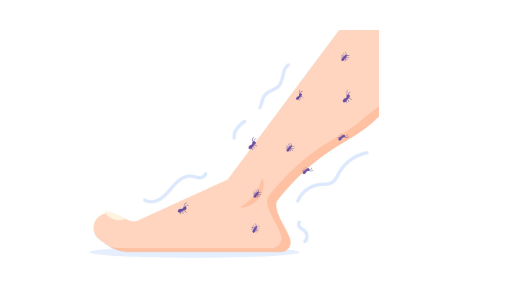
Groundbreaking research reveals a surprising connection between neuropathy and this "miracle" mineral.
A new study found that people who had high levels of this "miracle" mineral in their diet were less likely to experience neuropathy.
Folks suffering from
Were all shocked by how adding this mineral in their diet could eliminate their nerve pain so quickly...and restore sensation...
Even for people with severe nerve pain or nerve degenerative diseases like diabetes mellitus and multiple sclerosis...
Something no prescription drugs, shots, chiropractic, acupuncture, or doctor visits ever helped them do...
⇒ Click here to see the study for yourself

-Dr. Chad Walding
DPT, ISSA Nutrition Specialist & NativePath Co-Founder
A new study found that people who had high levels of this "miracle" mineral in their diet were less likely to experience neuropathy.
Folks suffering from
- Tingling...
- Numbness...
- Burning...
- And pain in their hands, feet, legs, and face...
Were all shocked by how adding this mineral in their diet could eliminate their nerve pain so quickly...and restore sensation...
Even for people with severe nerve pain or nerve degenerative diseases like diabetes mellitus and multiple sclerosis...
Something no prescription drugs, shots, chiropractic, acupuncture, or doctor visits ever helped them do...
⇒ Click here to see the study for yourself

-Dr. Chad Walding
DPT, ISSA Nutrition Specialist & NativePath Co-Founder

olecular dating studies suggests a Cretaceous evolutionary radiation, while fossil evidence points to a Cenozoic radiation (the so-called 'rocks' versus 'clocks' controversy). The discovery in 2005 of Vegavis from the Maastrichtian, the last stage of the Late Cretaceous, proved that the diversification of modern birds started before the Cenozoic era. The affinities of an earlier fossil, the possible galliform Austinornis lentus, dated to about 85 million years ago, are still too controversial to provide a fossil evidence of modern bird diversification. In 2020, Asteriornis from the Maastrichtian was described, it appears to be a close relative of Galloanserae, the earliest diverging lineage within Neognathae. Attempts to reconcile molecular and fossil evidence using genomic-scale DNA data and comprehensive fossil information have not resolved the controversy. However, a 2015 estimate that used a new method for calibrating molecular clocks confirmed that while modern birds originated early in the Late Cretaceous, likely in Western Gondwana, a pulse of diversification in all major groups occurred around the Cretaceous–Palaeogene extinction event. Modern birds would have expanded from West Gondwana through two routes. One route was an Antarctic interchange in the Paleogene. The other route was probably via Paleocene land bridges between South America and North America, which allowed for the rapid expansion and diversification of Neornithes into the Holarctic and Paleotropics. On the other han
